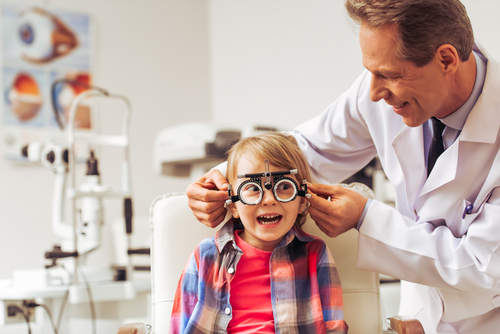Should My Child See a Pediatric Ophthalmologist?

As a parent, guardian, or caregiver, you want to give your child every possible advantage as they begin their lives. Many put time and energy into finding the right childcare or preschool, checking references on nannies and babysitters, and investigating the best pediatricians in the area.
If you want to start your child off on the best foot, make sure you also place a focus on their eyesight. Keep reading to learn when your child should see a pediatric ophthalmologist!
Get a Head Start on Vision Care
Finding a trusted pediatric ophthalmologist and scheduling your child’s first eye exam when they turn two years old is an important step many overlook. Especially if your child has difficulty seeing, you want to know as early as possible.
Uncorrected vision problems can impact a child’s developmental milestones and set them up for frustration and even failure later on. If you’ve ever worn glasses, you know the magic that occurs when things you couldn’t see before come into sharp focus.
Sometimes, children do not know to voice a blurry vision issue or that they are even experiencing one. By taking your child to the eye doctor early in life, you can get ahead of the issue and ensure they see the world with clear vision.
Diagnosing Vision Problems Early
The pediatric ophthalmologists at Berg Feinfield understand how important your child’s total wellness is to you, including eyesight. Pediatric ophthalmologists can identify vision problems such as nearsightedness, farsightedness, and astigmatism, all of which can be handled with corrective lenses.
If there’s any indication of eye conditions such as amblyopia or strabismus, they can guide you toward a treatment plan to address these problems before they worsen.
What Is Amblyopia?
You might know it as lazy eye, and it’s common among children. Amblyopia is caused by abnormal visual development and is characterized by reduced vision in one eye.
The weaker or lazy eye often wanders, while the unaffected eye becomes stronger. This condition develops in children through age six and is commonly treated with glasses or an eye patch.
The goal of treatment is to strengthen the weaker eye.
What Is Strabismus?
Strabismus occurs when the eyes do not line up correctly and point in different directions. While it’s often referred to as crossed eyes, one eye may look straight ahead while the other eye turns in, out, up, or down.
When strabismus affects children, it makes them unable to align both eyes correctly and focus both eyes on one object simultaneously. Special eyeglasses, blurring eye drops, an eyepatch, prisms, or eye exercises may be prescribed.
In advanced cases, eye doctors may recommend surgery to treat strabismus.
What To Expect From a Children’s Eye Exam
At age two, your child will be tested for visual acuity, eye alignment, and focusing skills, which are essential for reading and eye-tracking. Your child may need testing earlier if there’s evidence of a visual problem.
Testing can also detect dyslexia, color blindness, amblyopia, or crossed eyes. Schedule an annual eye exam for your child regularly, the same as you’d do for yourself.
Early detection is critical in preventing difficulties in development and learning.
Symptoms of Vision Problems
If your child is older, like school-aged, for example, certain behaviors are indicators of visual problems. If you spot one or more of the following, make sure to schedule an eye exam:
- sitting close to the TV
- difficulty reading
- squinting
- rubbing eyes
- sensitivity to light
- frequent headaches
It’s relatively easy to diagnose and correct vision problems, and help your child achieve to the best of their abilities.
Is it time for your child to have an eye exam? Schedule an appointment at Berg Feinfield Vision Correction in Burbank, CA, today!








